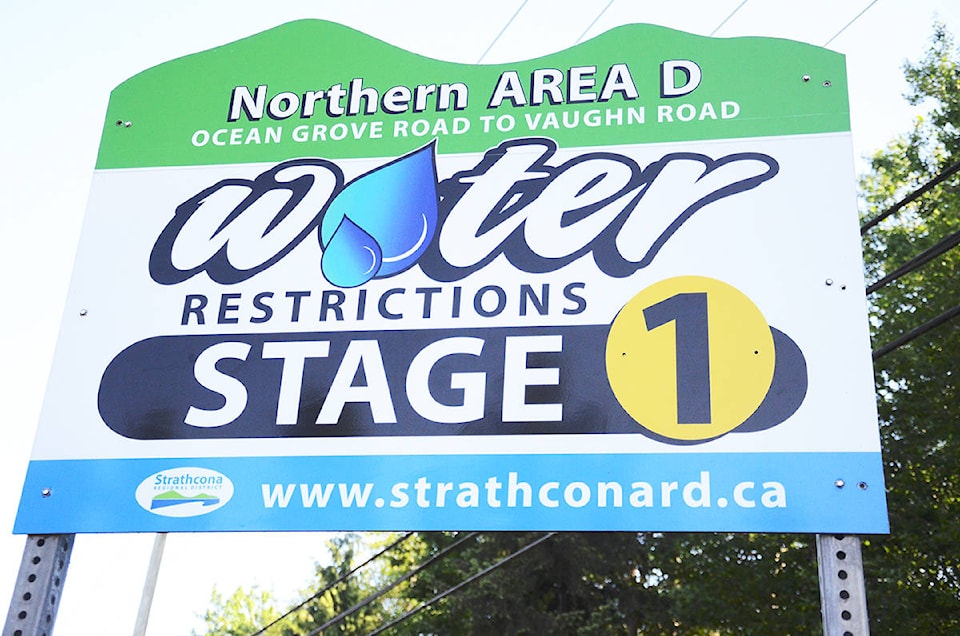To the end, Area D Director Brenda Leigh pushed back against increases to water rates for the north part of her electoral area.
In the end though, the majority of her colleagues on the Strathcona Regional District board adopted a bylaw at the June 6 meeting to bring in new rates. These rates are to make up for the shortfall in the water utility, which SRD staff indicated would need dramatic increases to pay for itself : $1.45 per cubic metre for commercial and to $1.36 per cubic metre for residential customers on meters, or hikes of more than $0.16 and $0.19 from this last year, and a jump from $402 up to $800 per dwelling unit for those on flat rates.
Leigh had suggested the board should wait on a legal opinion before adoption.
“I fear there’s not enough due diligence,” she said.
Staff, however, clarified the board can impose the new rate structure while waiting for a legal opinion .
At the previous meeting, Leigh suggested part of the problem around water use resulted from secondary suites. At this meeting, she targeted the bulk rates the City of Campbell River charges as the main culprit for the financial imbalance.
She had wanted to distribute figures she found on what other communities pay for water, suggesting the amount for residents in north Area D is three times greater than that in Campbell River or the Comox Valley.
“This is a quick snapshot. This is a residential water rate average,” she said. “It’s so obvious from this list we’re being charged an unfair rate from Campbell River.”
Charlie Cornfield, one of the Campbell River representatives, asked about the source of the information. Leigh responded it came from water rates bylaws in different communities. He said he would not support a motion to receive the information, adding it would have been more appropriate for staff to provide it.
Chair Michele Babchuk thanked Leigh for the list but questioned the figures.
“I, too, have some questions around the presentation,” she said. “I don’t believe they are totally accurate.”
The motion to receive the information failed prior to the voting on the rate bylaw. The board agreed to hold all votes from first reading through adoption. Leigh and Sayward’s John MacDonald voted against the bylaw.
The vote on the rates followed a presentation at the outset of the meeting by Rod Nugent, president of the Area D Residents and Ratepayers Association. He outlined a number of concerns and said residents in the north are not happy about the large rate increases, though he understands the situation required action.
“If we can’t fire the water service, we can at least improve its management,” he said.
The south part of Area D is serviced by the Black Creek Oyster Bay Water Services Committee, part of which lies in the Comox Valley Regional District. This has been the case since 2008, Leigh said, as a holdover from the days when the two areas were within a single regional district.
Nugent identified a number of factors, most notably the bulk water rates, which he said had received too little focus in the discussions. Another concern the group has is the possibility the Black Creek Oyster Bay water service could take over the service in the north part of Area D. He also said his group is studying an alternative water source that could potentially serve both the north and south parts of Area D.
